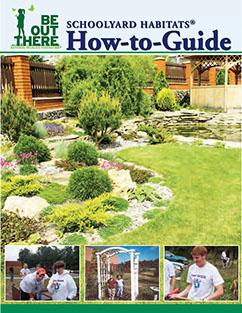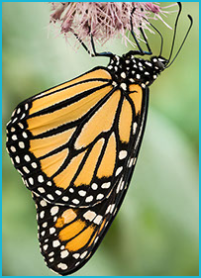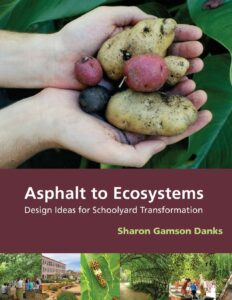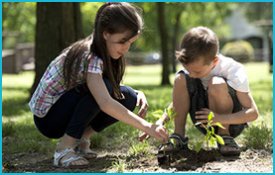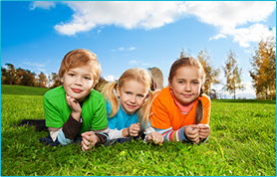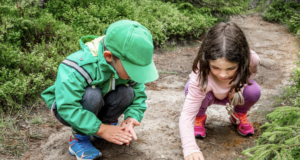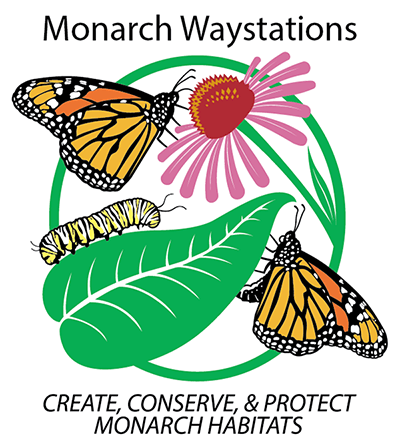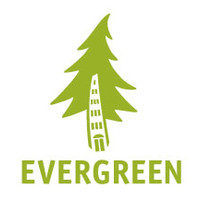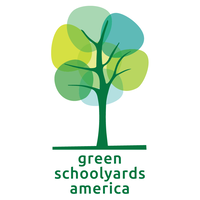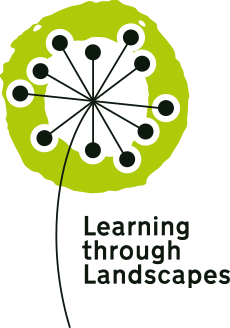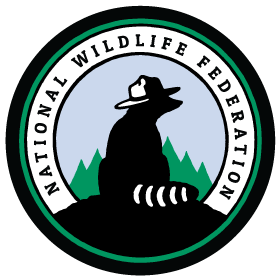Green School Grounds
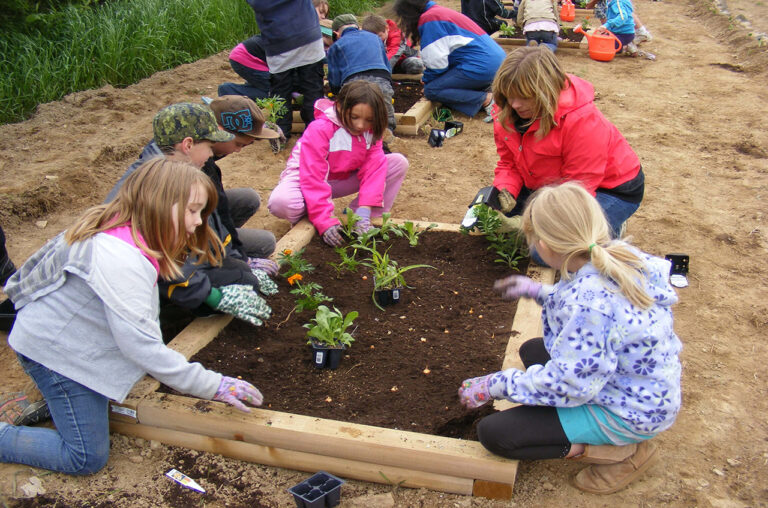
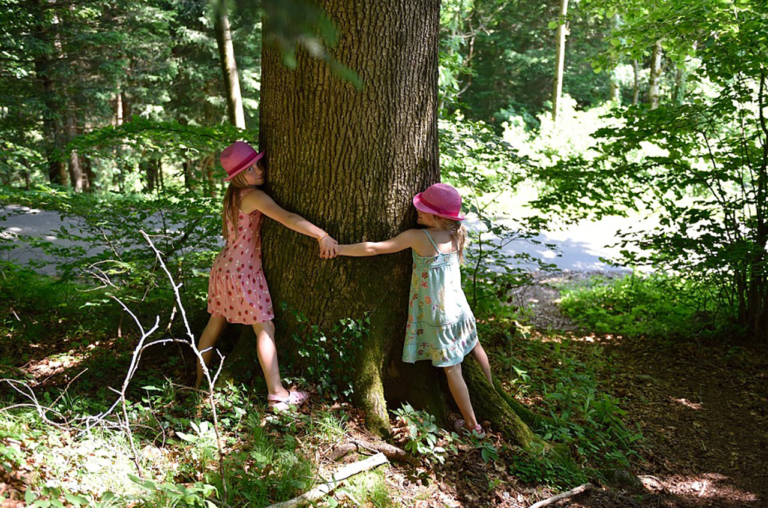
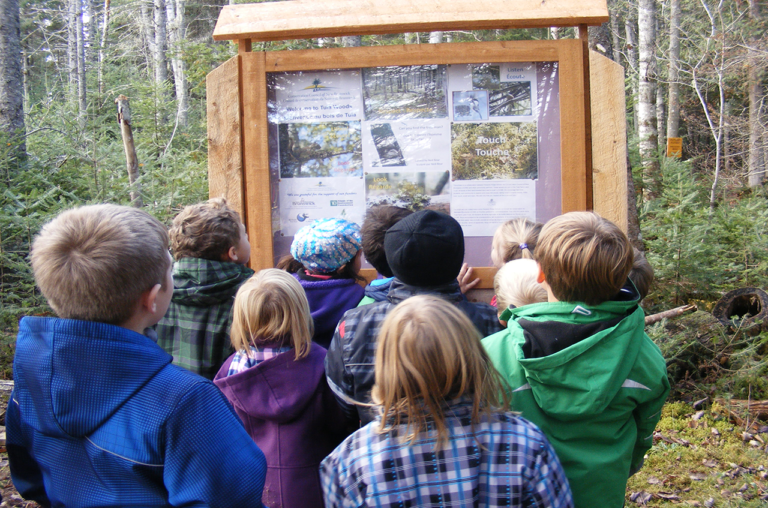
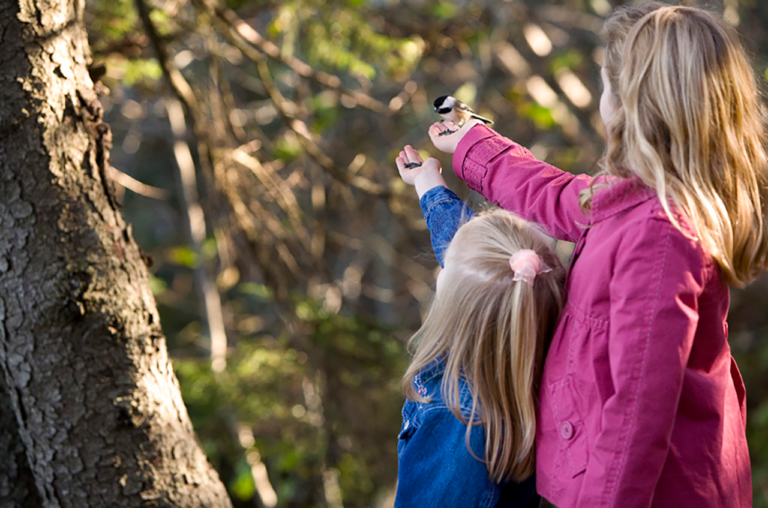
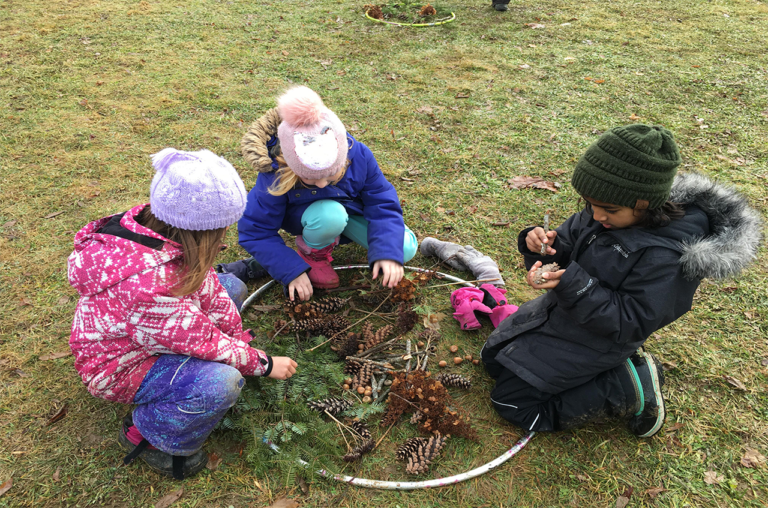
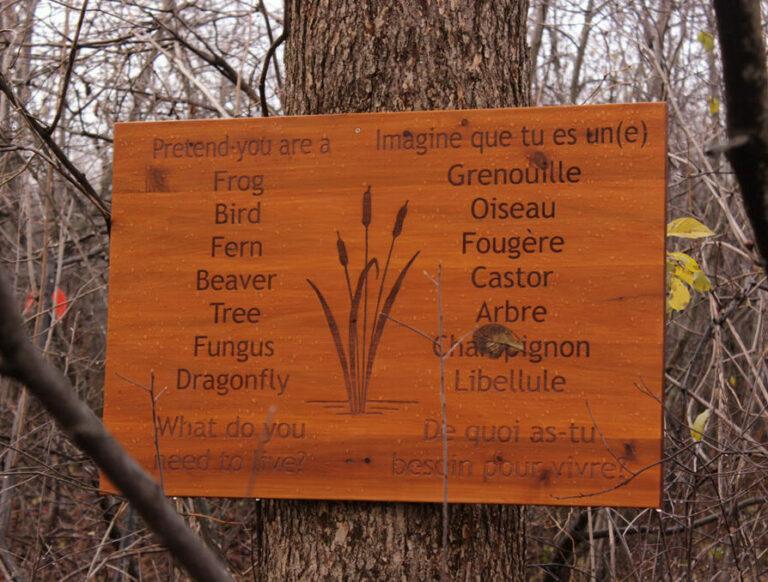
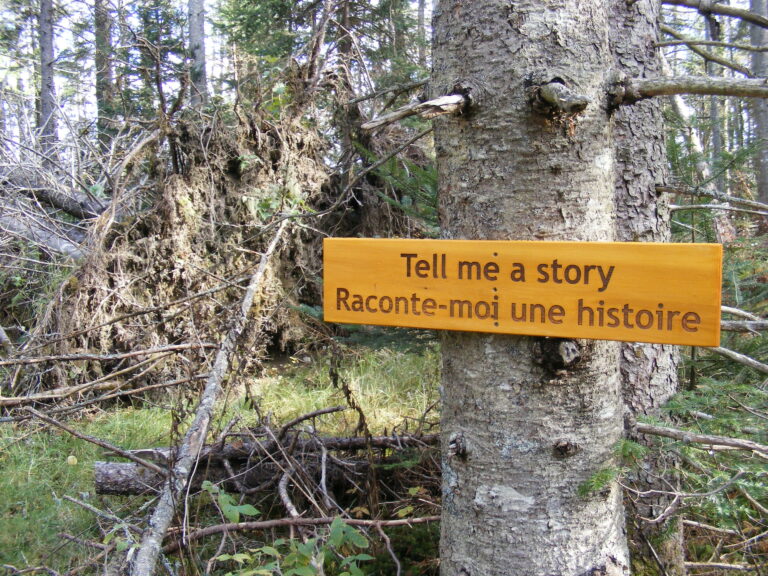
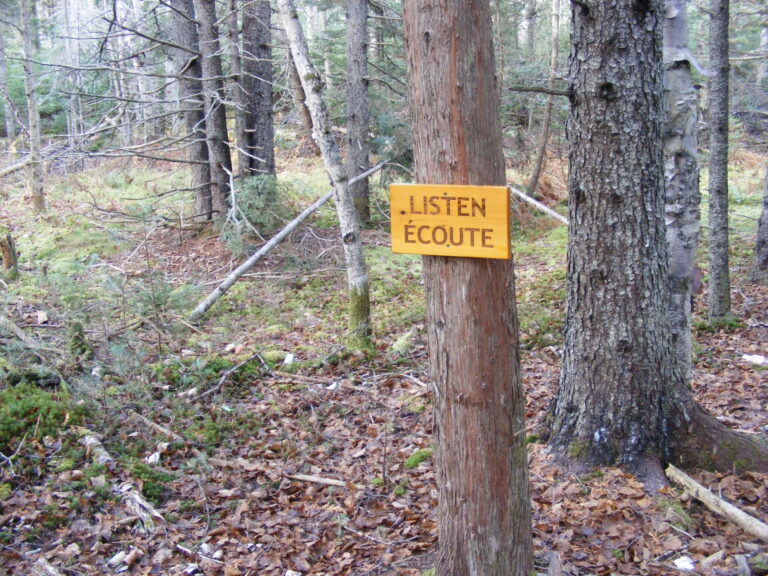
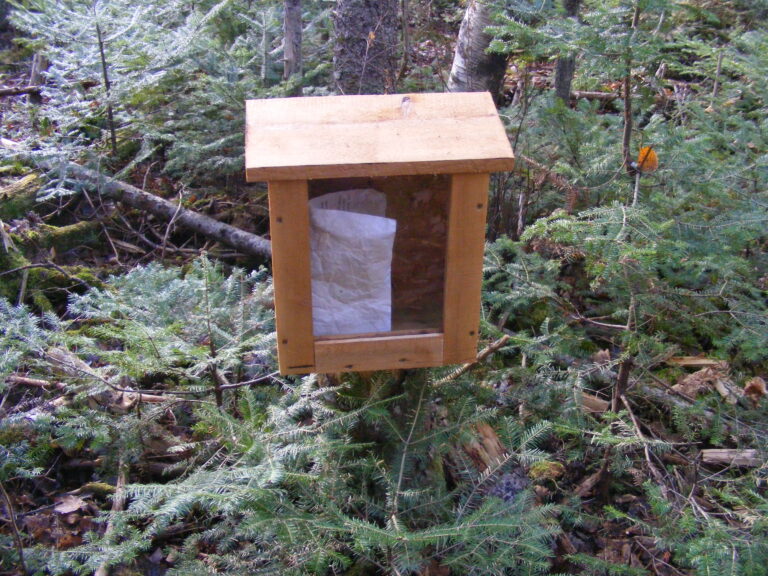
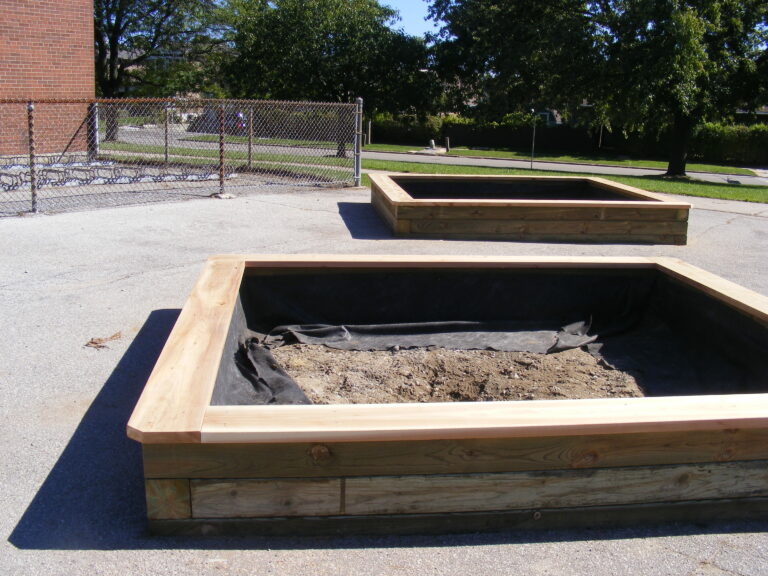
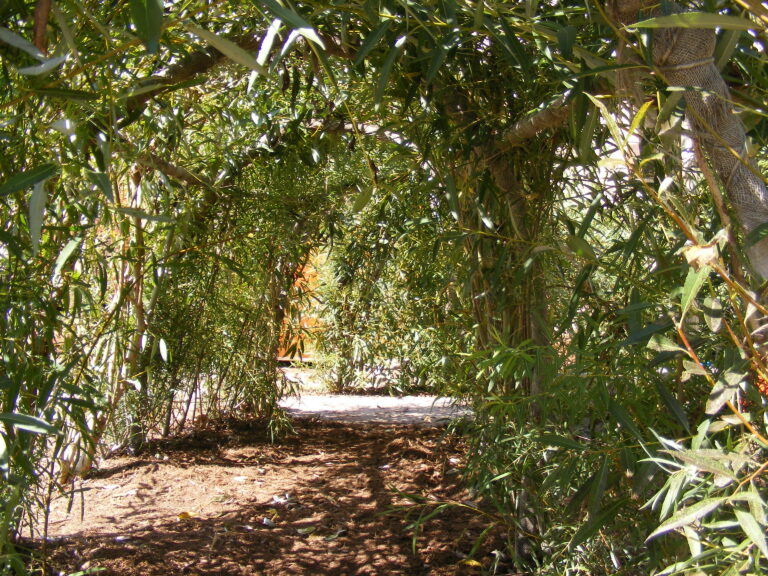
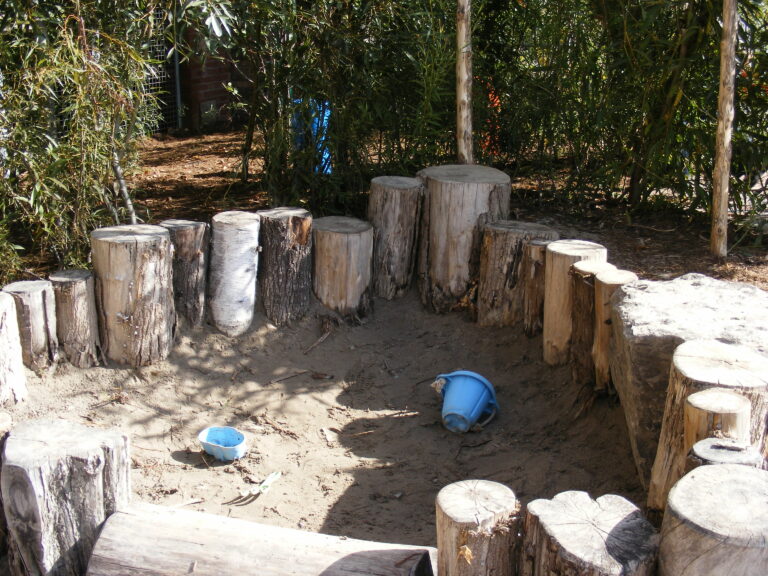
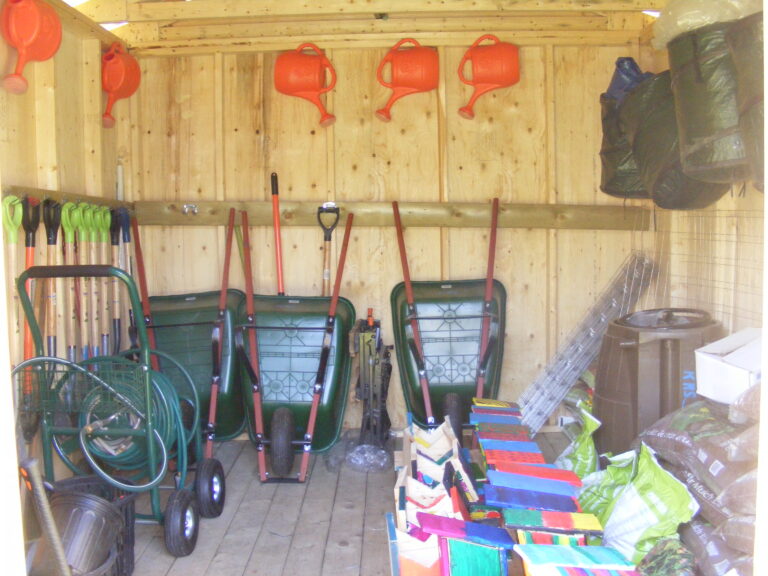
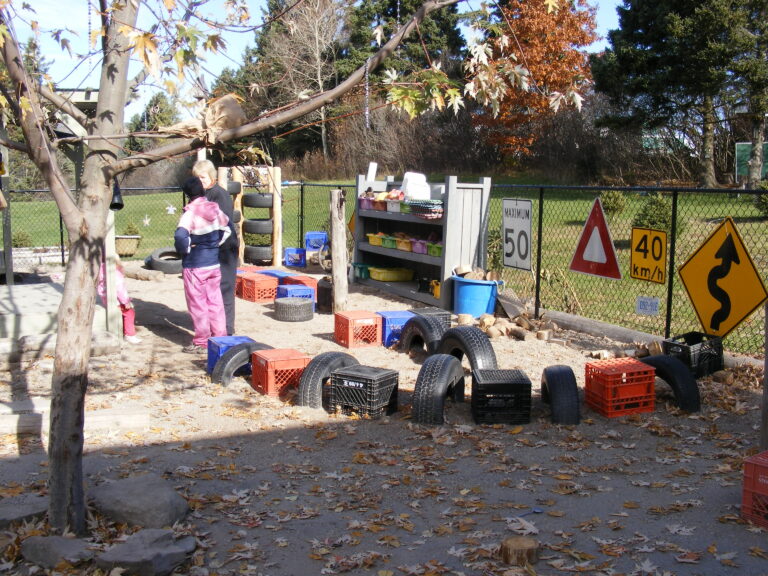
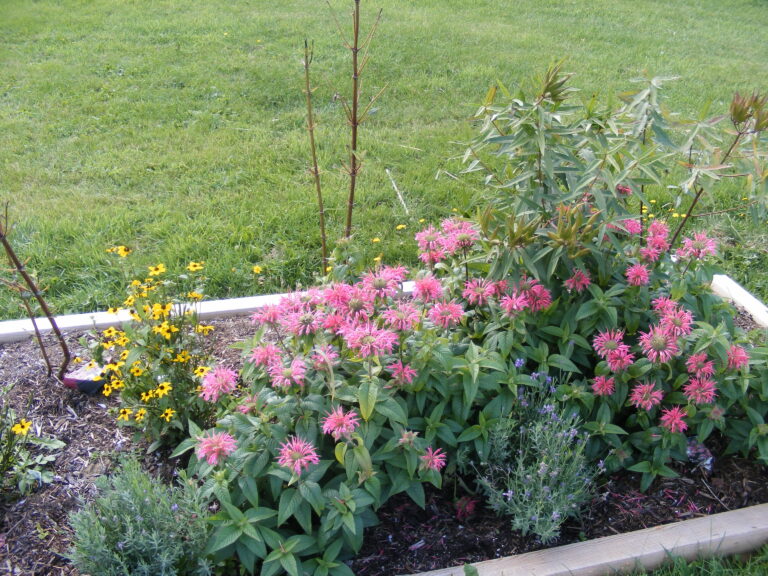
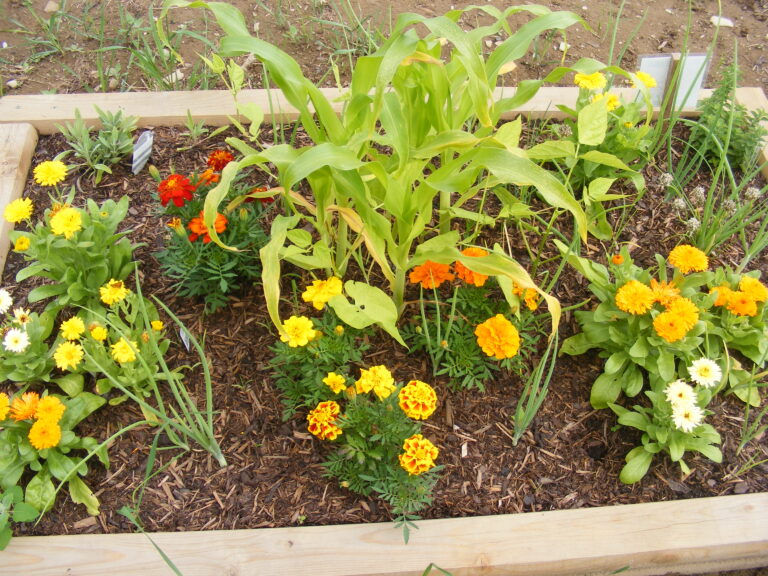
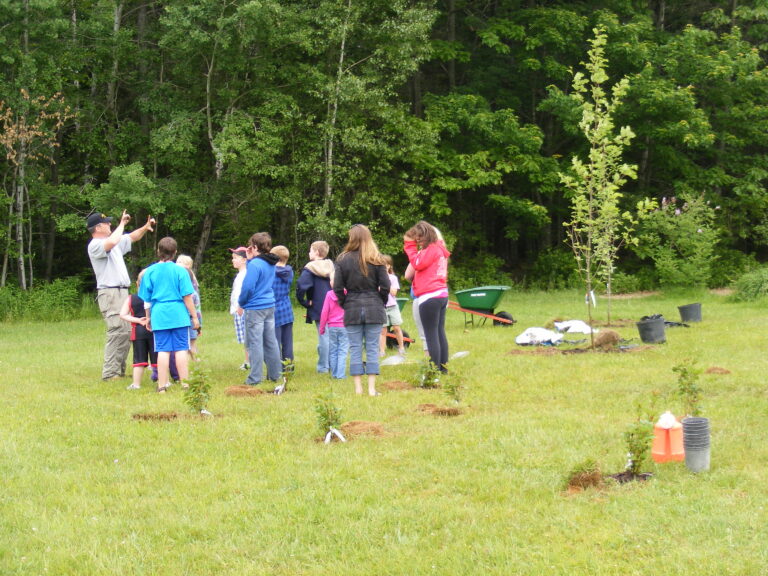
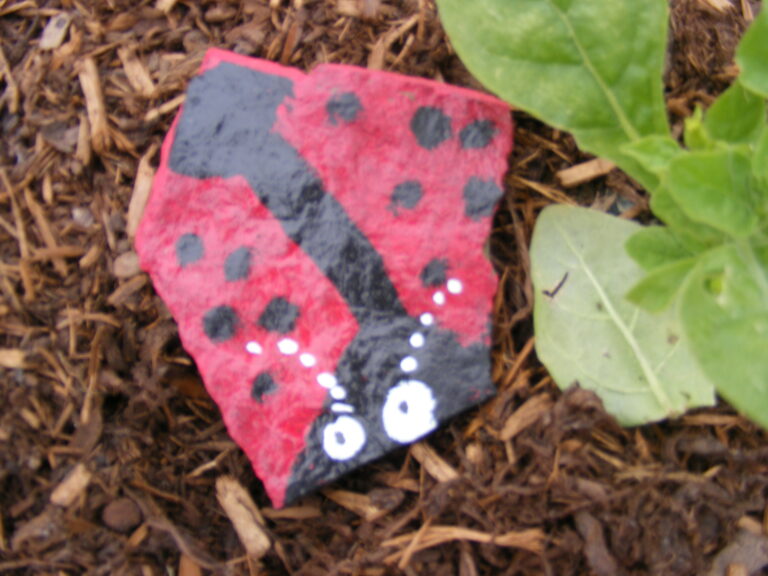
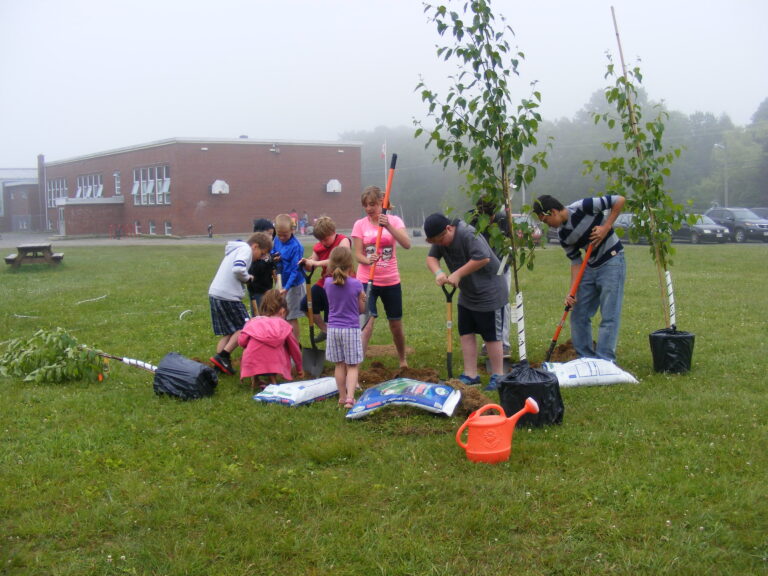
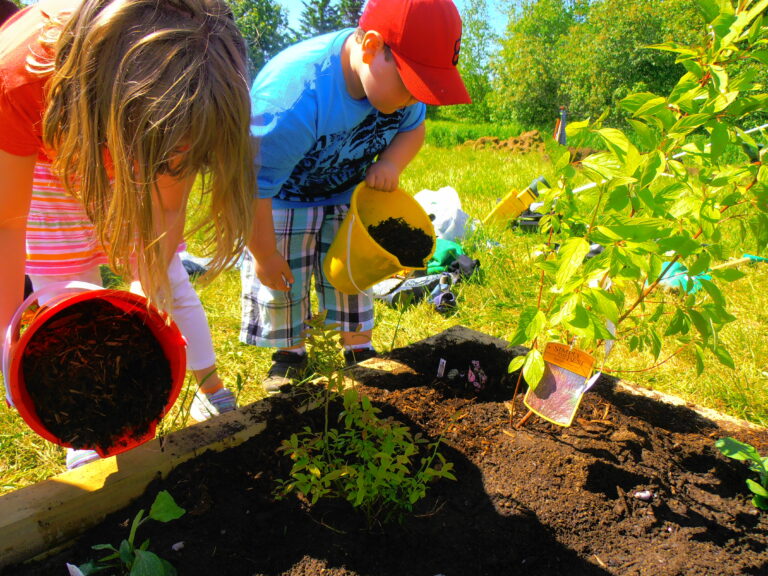
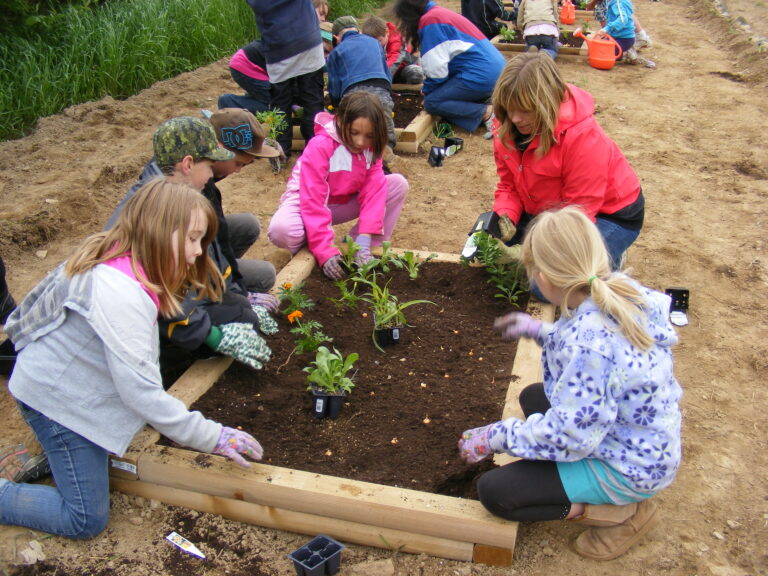
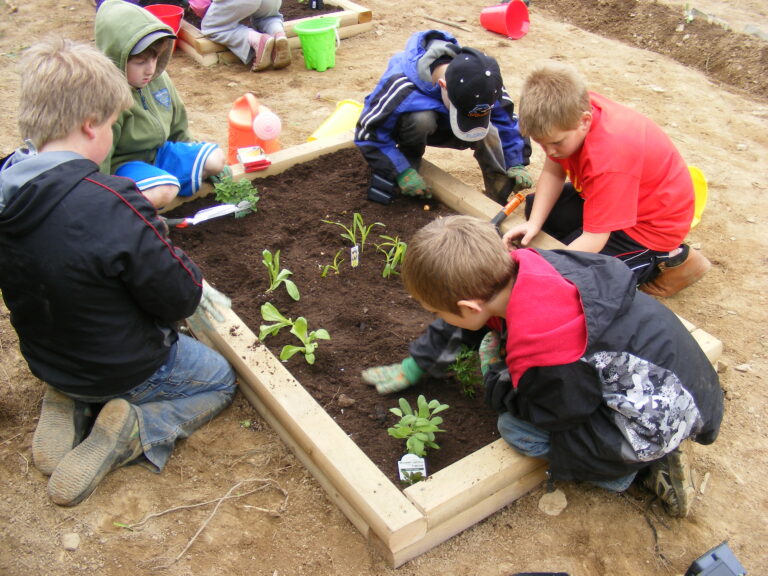
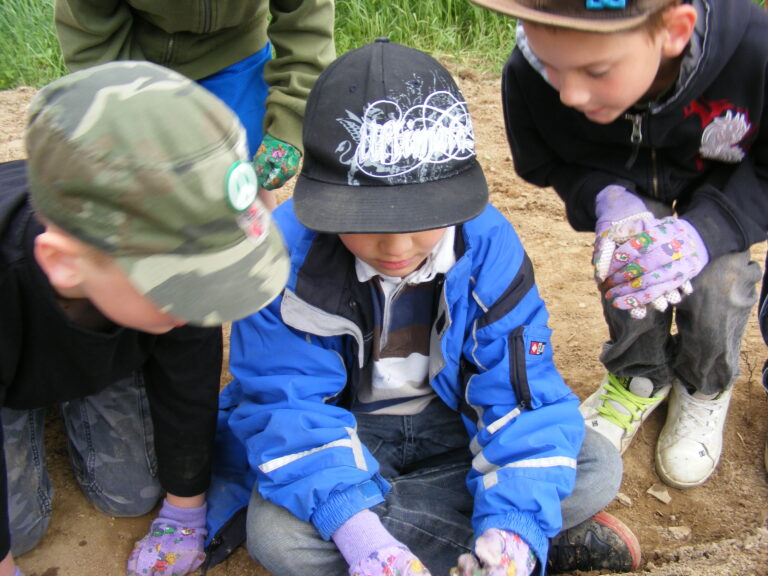
Your Greening School Ground Project
Many school ground improvement initiatives include ‘greening’ projects. We know instinctively that children thrive in natural settings with opportunities to engage all their senses in exploration of nature, with a growing body of research supporting this. ‘Green’ or natural areas have great play value and promote children’s physical, mental, emotional and social development (see Children and Nature). They can also be cost effective and environmentally sustainable. In addition, they provide important learning opportunities that can be successfully linked to curriculum.
Greening school grounds projects can be as simple as a ‘no mow’ area or planting native trees and shrubs. Many schools start with a small project or two and then develop their grounds over time, as funding becomes available. This is an excellent way to proceed.
We are fortunate that many schools in New Brunswick have natural areas on or adjacent to school property that, with a little enhancement, make wonderful learning spaces. But even schools with limited outdoor space can be transformed into exciting, educational spaces with a little creativity.
How to get started?
We suggest you bring together a team of interested teachers, principal, parents, community members – and students! Have a good look at your school grounds and identify natural features that could be highlighted, as well as areas you would like to transform. Brainstorm about the types of projects that your school community would like. Some schools want nature trails and woodland seating areas. Others want students to learn about growing food and so build vegetable gardens. Go with your strengths and come up with a plan that will work for your school (Learning Outside can help you!).
It’s a good idea to think ‘big picture’ and then break down your plan into projects that can be achieved in stages, building on your successes. Don’t forget that in addition to beautifying your school grounds and creating play areas for children and habitat for wildlife, you will be enhancing learning opportunities across all subject areas for your students (and teachers!).
There is funding available to help you make your project(s) a reality. Look into provincial government sources, community foundations, local businesses, and national foundations. Community partnerships can be very worthwhile. We do not provide funding, but may be able to make suggestions based on your particular plans. Feel free to contact us.
Inspirational Projects:
In 2011, a pilot project at Keswick Ridge Community School was initiated. This began with a visioning process involving the school principal and staff, the school district community school coordinator, along with community organisations (including the Conservation Council of New Brunswick and the fledgling Learning Outside project) and a number of interested individuals. In June 2012, students participated in planting vegetable gardens, bird and butterfly gardens, native trees and shrubs, along with refurbishment of a woodland trail.
The entire teaching staff took part in an all-day outdoor teaching training workshop with Dr. Alan Warner in August 2012 and now regularly take their K- Grade 8 classes outdoors for various activities.
Learning Outside continued to work with the school, developing learning stations and interpretive signage for the nature trail, along with installing a message centre at the trail entrance. A trail box near the entrance set the stage for a magical pen pal relationship between students and one of the woodland gnomes who protects the area.
As sometimes happens, great initiatives can suffer setbacks. Post-tropical storm Arthur severely damaged the woodland trail a few years ago, although teachers continue to encourage outdoor learning. In Spring 2019, the school, along with community partners, refurbished the trail (once again) and the school continues to move forward with its outdoor projects.
The Keswick Ridge School pilot project remains a good example of the whole-school approach that we are sharing with interested schools, educators, organizations, community groups and the public and reminds us that sometimes there will be setbacks, but they can be overcome!
Learning Outside has been working with the Lincoln Elementary Community School since 2014. The school property includes a large natural area that extends down through a wetland to the silver maple forest along the Wolastoq (St. John River).
We helped establish a nature trail and developed learning stations that include signs to encourage observation and discussion (which can be used for curriculum-linked activities) and trail-side boxes for stashing worksheets, scavenger hunt clues, field or trail guides, binoculars or whatever an activity-leader may want available during an activity. A message centre and arbour mark the entrance to the trail, which is open to the public outside of school hours. The school has purchased snowshoes and rainboots so students (and teachers!) can go out in almost any weather.
For several years, we have led school classes in outdoor educational activities on a regular basis. The Nature Conservancy’s Lincoln Wetland Conservation Area is adjacent to the school property and the Nature Conservancy, the Conservation Council and the school partner on trail maintenance and community and school activities.
This K-Grade 5 school in Grand Bay-Westfield has 260 students and about 23 staff.
The outdoor classroom is used for reading, writing, art, and science experiments. A small raised garden bed grows not just vegetables, but confidence and community. Every spring, kindergarten students plant potatoes, carrots and other vegetables. Come Fall, these students, who are now in Grade 1, welcome the new Kindergarteners by harvesting the vegetables and making ‘stone soup’ with them. This simple activity creates a lovely mentoring opportunity, with the new students being welcomed each year and the next year becoming mentors themselves. Teachers read ‘Stone Soup’ (literacy curriculum link) and, as with all good stone soups, others get involved by contributing additional ingredients, turning it into a school community celebration.
Lisa’s Playhouse Early Learning Centre, in Roachville, NB (near Sussex), provides all kinds of fun, creative outdoor spaces for infants and preschool children. Lisa uses all sorts of natural materials as well as recycled materials.
Note the pipe used for a ‘whisper tunnel’ (photo 1) and hub caps for music-making (photo 4). There is also an ‘Alphabet Trail’ through the woods (‘G is for gingerbread’) and an outdoor classroom (the blackboard has survived several winters so far).

Cassandra Public School is an ECO School in North York, ON. Their schoolyard greening began with parents and students planting perennials in the flowerbeds in front of the school. A teaching vegetable garden and composting area were also created. These areas are maintained by the “Summer Sprinklers” – families who sign up for weekly watering! Concern for shade for the students prompted the planting of many trees.
A new playground / outdoor classroom was created in 2012, featuring natural elements. A speaker’s platform / stage can be used for all sorts of activities (a backdrop can be hung between the posts), while large logs create a bench / balance beam. A log climber challenges and also provides seating. An “Amphibian Oasis” was created for additional outdoor learning areas and a solution to standing water issues on the property.
Jackman Avenue Public School in Toronto has been working on school grounds greening projects since 1999 and has attained the Toronto District School Board’s ECO Schools Platinum Certification. Jackman Avenue is the first school in the Toronto District School Board (TDSB) to have a retrofitted green roof (photo 2).
Dozens of trees have been planted, and a big portion of asphalt was turned into gardens (photos 3 & 4). Among the different gardens is a vegetable learning garden and a maze of native grasses. A stone amphitheatre (photo 1) was also built to serve as an outdoor classroom. Jackman’s school yard provides a healthier environment for students to play in, as well as many opportunities for ecological learning.
The Jackman school community also works hard to reduce waste. Students are encouraged to bring litterless lunches and compost all organic matter. There is a recycling program for paper, bottles, cans, juice boxes and ink cartridges. The students are in charge of collecting both compost and recyclables. The school newsletter is posted on their web site, significantly reducing the amount of paper consumed.
As part of efforts to conserve energy, trees were planted adjacent to the building to provide passive cooling, solar blinds and ceiling fans were installed, and UV film was placed on the windows. The green roof also helps keep the building warmer in winter and cooler in the summer.
Books and Online Publications:
National Guidelines: Nature Play and Learning Places – Executive Summary (4 pages)
Toronto District School Board: Best Practices Guide (91 pages, PDF)
EcoSchools DYI Guide 2014-2015 (28 pages, PDF)
Resources:







